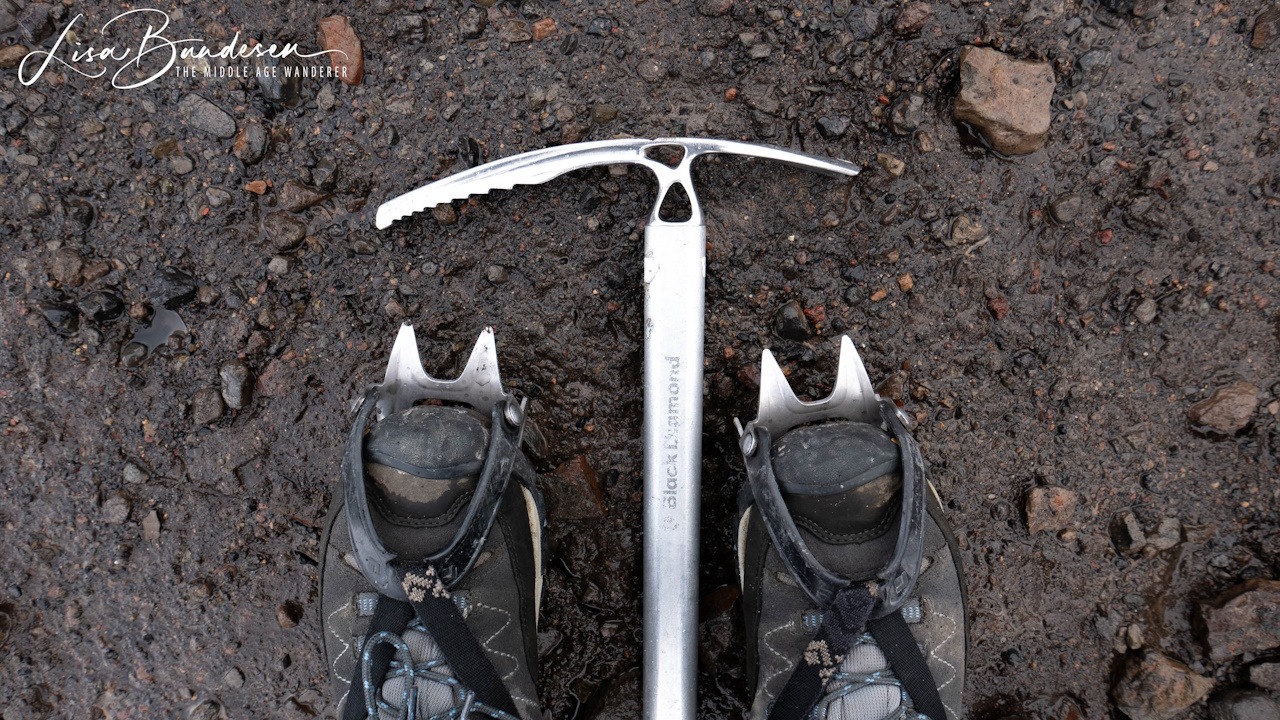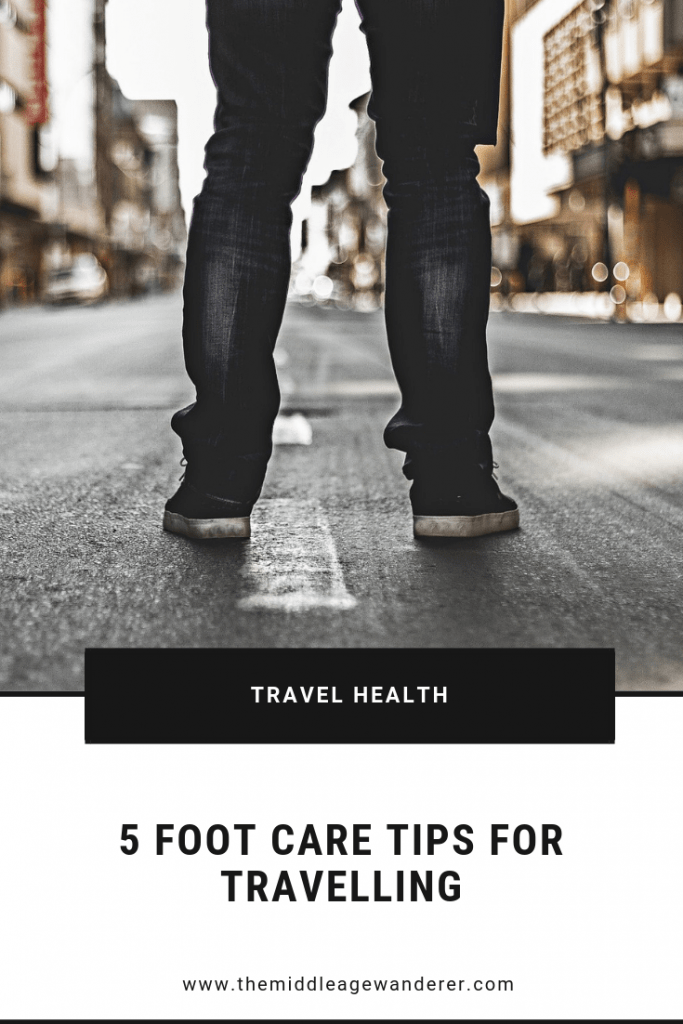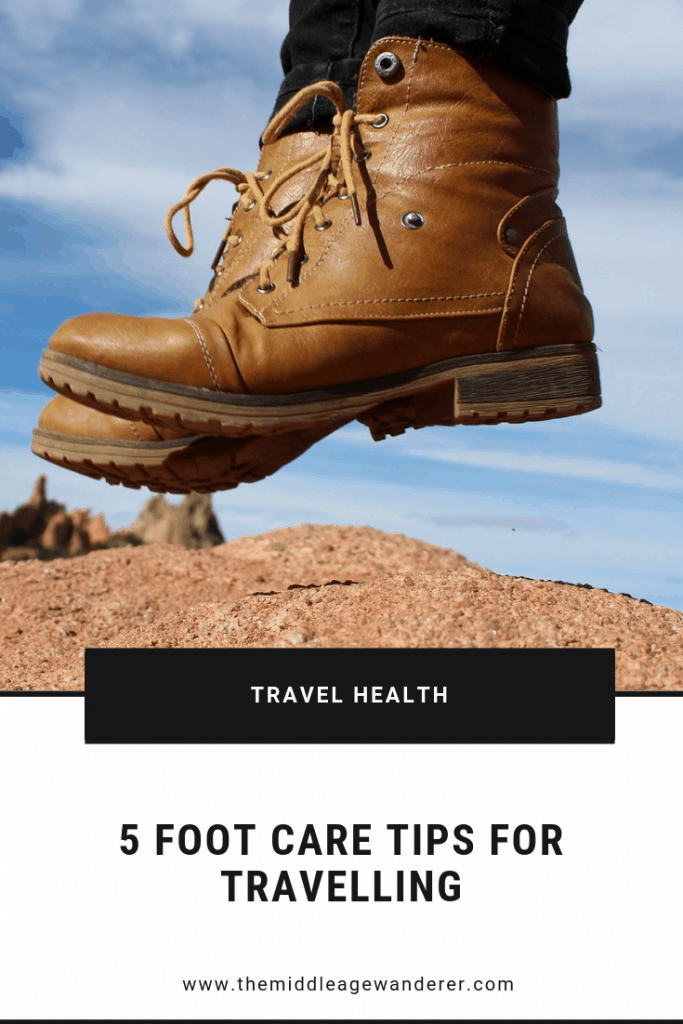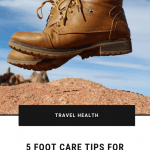
For many of us, travelling also means we tend to do a lot more walking that we would usually do in our day to day lives. So that also means our feet are being put through a lot more stress than they would usually be accustomed to, so foot care is really important.
When we travel, we do a lot of hiking and even if we are exploring cities it is not uncommon for us to walk over 20 km each day. But it also means that the foot injury I suffered a few years ago can cause me problems if I do not take care of my feet.
I suffered my foot injury while running on a treadmill at the gym. Not the expected way to suffer an injury – I wasn’t running on uneven ground or running on a hard surface. But I tore my Plantar Fasciitis. This is the band of tissue that runs along the bottom of your foot. It supports the arch and is designed to take a lot of strain and stress. Unfortunately, as we get older, it is harder for these tears to repair and it is now an issue I have to deal with on an ongoing basis.
Therefore, I am very careful to protect my feet when we travel. These five tips have allowed me to keep my feet in good condition and manage my injury while we travel.
I regularly read in Facebook groups, questions about what the best types of shoes are for hiking. Whether it’s hiking or just walking around a city, the shoes you buy need to suit your feet. You need shoes to be properly fitted. A tip for when you are trying on shoes is to take a pair of the socks you will be wearing with them to make sure they are comfortable with those socks. Consider the purchase an investment rather than a cost.
Socks are also an import part of looking after your feet. Cotton socks hold moisture and therefore can contribute to blisters and foot fungus. If possible, find socks that have a large percentage of merino wool.
Also, break in your shoes before taking them away with you. You want to make sure that if they may cause blisters it will happen before you take them on your travels.
Foot diseases such as athlete’s foot or tinea are a common skin infection caused by a fungus. The fungus usually grows in warm, moist conditions such as shoes, socks, swimming pools and showers. It is common in warm and humid climates and during summer.
There are four things I do to try to prevent fungal infections in my feet while travelling:
Have you thought you’d like to try hiking – why not read my 10 Tips to Get Started Hiking.

What causes blisters?
Blisters happen when your shoes / socks rub against your feet. The thick outer layer of skin starts to separate from the more sensitive inner layer and a hot spot is created. After rubbing for about 10 minutes fluid builds up between the two layers of skin and you have a blister.
Prevention is better than cure
Shoe and sock selection is an important starting point in preventing blisters. Feet need to be kept dry and consider if you need supportive insoles (see Tip 5). Clip your toenails and use tape or band aids in areas that may get blisters to prevent them from occurring.
Caring for blisters
If you have a hot spot or a blister appear stop and check it straight away. Clean the area with antiseptic cream and cover it with a blister pad until you get back to your accommodation to check it properly.
Make a care pack to take on all your travels. The care pack should include the following:
If you have a foot injury or have had problems with your feet previously, it can be a good idea to visit a podiatrist before travelling. I see a sports podiatrist who has assisted me with my foot injury and foot care in general, by providing me with specially made inserts for my shoes that support my feet as well as specific exercises to do at the gym to help improve my core which in turn helps my foot injury.
My podiatrist has also given me advice on the best shoes (brands and models) that best suit my feet.


© 2024 The Middle Age Wanderer
Made with 

24 Responses
As someone who loves to look after her feet I really enjoyed this! I’ve struggled with blisters with my “good” hiking boots so I’ve recently switched over to barefoot hikers. Have been wearing them every day and my feet love them but haven’t tested them out in the field yet!
So glad you enjoyed it Gabby. And totally agree, a great pair of hiking boots are priceless. I have a pair of Keens that have been all over the world with me. I think I will cry when they finally fall apart.
Great tips. Thanks!
Thanks Megan. Hope they are helpful.
Some great tips, especially in the what to carry in your pack section. Thanks.
So glad you found it useful Rhonda. And yes the foot care pack has been very useful over the years.
A great guide for those who love hiking and walking alot. 🦶
Thanks Kat. I have definitely learnt from experience how to care for my feet!
I walk so much especially when traveling. I really need to do more to look after my feet. I broke my foot a couple years ago and since then I’ve been more aware of making changes like footwear choices. Great tips
Thanks Emma! My foot injury made me very much more aware of caring for my feet too. Our feet are really forgotten about especially since we put then through so much when we travel.
What a great post with such helpful tips! Keeping our feet healthy and pain free is so important when traveling. I did a tough hike and had the worst blisters that it kind of ruined the experience. I definitely take better care since!
I have learnt from a few bad experiences too Vanessa. My feet are definitely a top priority when we travel now!
Great tips! Good shoes that are fit for you specifically are key. Everyone’s foot is different and there is no right shoe for everyone.
Exactly Brianna. Spending the time to get a good fitting shoe makes such a huge difference.
Sorry to hear about your injury! It’s so true, bad shoes can very quickly make your trip an uncomfortable one. I also recently cracked my big toe surfing and had to be really careful to make sure it didn’t get infected (my other big toe nail is still messed up from another trip, a catamaran-related clumsy accident…). I always carry foot care things with me, so the care pack ideas were great, thanks!
Thanks Meri. My foot injury is manageable and I have definitely learnt to take much better care of my feet as a result of it. And toe injuries are definitely not good!
This post is extremely timely for me as I start a road trip up to Bishop, CA to do some hiking around the area. The right shoes are so important and this post is a great reminder to also wear the right socks and take care of any blisters.
Glad it is helpful Christy. And socks are so important!
We walk so much when we travel that shoes are the thing I never scrimp on when packing. I need to get better at actually replacing my worn out favourite shoes. And not be cheap about good socks! Good idea to travel with a food care kit!
Thanks Linda. Totally agree about the worn out shoes. I have a pair of hiking boots I’ve had for over 10 years that I just can’t seem to let go.
I never really thought about this! Very informative
Thanks. I’ve learnt from bad experiences.
Great tips, especially when headed out on a hiking or walking holiday!
Thanks Sonia. Foot care is definitely so important.